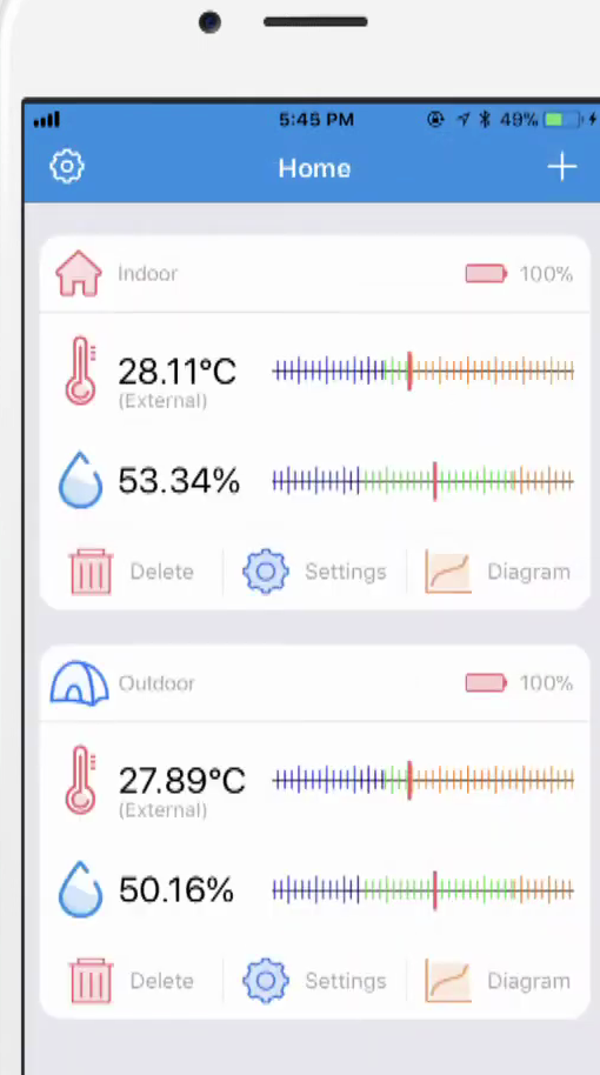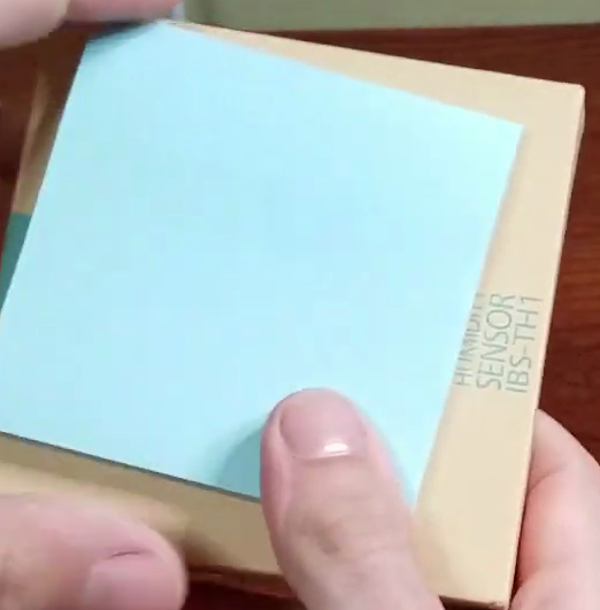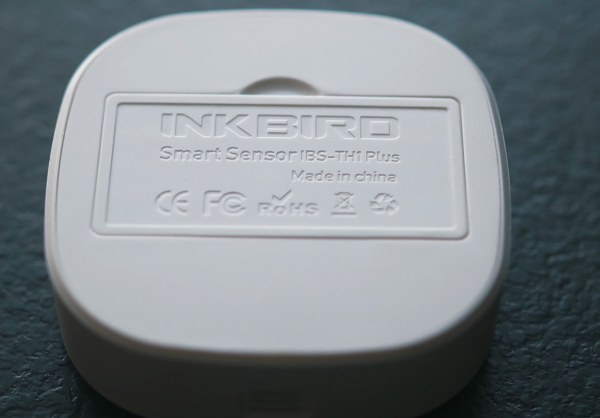Note: As an Amazon Associate I earn from qualifying purchases.
My experience with the Inkbird IBS-TH1 Wireless Smart Temperature Humidity Sensor (2024)
Introduction
Three weeks ago I added the Inkbird IBS-TH1 to my smart home setup. My hope is to keep things uncluttered while gaining accurate control over my home’s temperature and humidity, which this device helps in pretty well.
Specifications
| Property | Value | Property | Value |
|---|---|---|---|
| Color | white | Brand | Inkbird |
| Item Weight | 0.07 Kilograms | Lower Temperature Rating | 140 Degrees Fahrenheit |
Photos
Click on photos to enlarge them:
Prices
Check prices of the Inkbird IBS-TH1 Wireless Smart Temperature Humidity Sensor on:
Initial Setup Experience
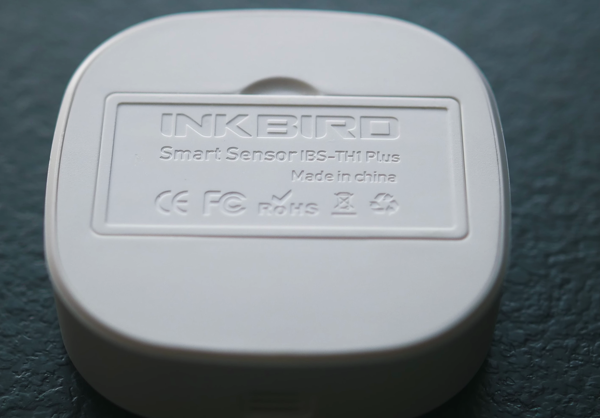
During the initial stages of implementing the Inkbird IBS-TH1 into my smart home setup, I was filled with a sense of anticipation and meticulousness. Here’s an account of the early steps to integrate this gadget into my tech-minimalist abode:
Installing the Batteries: The device needs two standard AAA batteries. I prefer this as they’re easily obtainable and widely used in various household items.
Downloading the App: The Engbird app is available for both iOS and Android platforms, making it accessible regardless of my smartphone choice. Installation was straightforward.
To pair a device via Bluetooth using the latest SDK version 26, it’s essential to activate GPS for accurate identification and connection during the pairing process. This step is crucial for correct device recognition and establishment of a stable connection. Pairing via Bluetooth involves enabling location services on your device to facilitate identification and synchronization between devices.
Settings for Temperature and Humidity Alerts: Customize these alerts based on your preference. Choose between Celsius or Fahrenheit as your measurement units and decide on the sampling intervals to suit your needs. This impacts data storage duration.
The intuitive user interface of the app was a significant plus, making it easy and effortless for me to navigate and efficiently view the data. The inclusion of multiple languages, expanding the app’s accessibility to diverse users, was a thoughtful addition. Regrettably, I found the Bluetooth range to be restrictive and less than intuitive, requiring my proximity to the sensor for a reliable connection.
Another plus, I could monitor multiple devices from a single phone, keeping track of different areas in my home like the RV and chicken coop. This feature supports my preference for minimalist living by reducing the required devices to ensure comfort and awareness in my environment.
The external probe is useful for measuring liquid temperatures, which is important when monitoring outdoor pets’ water during colder months. Its detailed design enhances the product’s practicality, making it appealing to me.
The setup process of the device was seamless, yet the long-term viability in my situation hinges on both its technical capabilities and mine. Although it lacks Wi-Fi connectivity, its ability to monitor home temperature and humidity within an acceptable range has provided a generally positive experience for me. However, the uncertainty surrounding the product’s long-term reliability, particularly its battery life and device durability, remains a concern. Despite this, the simple installation process aligns perfectly with my smart, minimalist lifestyle.
Monitoring and Range Limitations

When integrating Inkbird IBS-TH1 sensors into a smart home ecosystem, understanding their monitoring capabilities and range limitations is essential. Here’s a snapshot of what I’ve observed:
Effective Monitoring range is approximately 30 meters or 100ft without any obstructions. In reality, this distance can be greatly reduced when attempting to connect from different rooms or floors due to walls or other obstacles.
The Temperature and Humidity Ranges for our sensors are as follows. The inner sensor’s temperature range is between -104 and 140 degrees Fahrenheit, while that of the external probe is from -104 to 212 degrees Fahrenheit. Humidity can be measured up to 99% relative humidity.
Data Storage: The data logger saves information for a 20-day period with a 1-minute interval. Longer intervals result in extended retention time but less detailed data.
The Inkbird app, available for both iOS and Android, supports multi-language and allows me to check historical and immediate data via Bluetooth. I’ve found this particularly useful as it negates the need to physically inspect the sensors, which is convenient for out-of-reach places like attics or behind appliances.
Pairing a mobile phone with multiple sensors is straightforward. Similarly, a sensor can send information to several smartphones, beneficial for households with numerous residents monitoring the readings.
However, Bluetooth’s effective range is shorter than the stated 30 meters within vehicles or buildings. This poses a limitation when not in close proximity. While it functions well in open spaces, its use is less ideal for situations beyond its reach.
In my experience with the product, I’ve identified certain limitations, particularly concerning its remote access capabilities. One significant drawback is that it cannot measure both internal and external temperatures concurrently, imposing a limitation on remote temperature monitoring. Furthermore, another constraint is that the device necessitates proximity for syncing, thereby posing a challenge when attempting to check the sensors from afar. These limitations on remote access could potentially be deal-breaking factors for users who require continuous monitoring.
My overall experience with the Inkbird IBS-TH1 is positive. I appreciate its low power consumption, easy setup, and accurate readings, as well as its data logging feature. However, it’s important to note that this device has range limitations, making it less suitable for those who need constant monitoring over greater distances. If you’re setting up a smart home environment, the Inkbird IBS-TH1 is worth considering. But before making a decision, take into account the specific requirements of your unique situation and spatial layout.
Battery Life and Durability

When evaluating the battery life and durability of the Inkbird IBS-TH1 temperature and humidity sensor, I’ve noticed varying experiences. Assessing the device’s long-term performance and resistance to wear are important in a smart home setup.
The device is designed to use two standard 2 AAA batteries for efficient power consumption, known for their wide availability and ease of replacement. These batteries are renowned for delivering excellent battery life, as evidenced by some users who have enjoyed extended periods of usage, up to several months. In contrast, others have reported rapid battery consumption within weeks. My own experience with the device’s battery consumption has been exceptional, with the 2 AAA batteries still going strong after four months.
Users utilizing the remote sensor feature have reported impressive power consumption levels, making it an ideal choice for deploying devices in hard-to-reach areas. This is primarily attributed to the advanced Remote Sensor Power technology integrated into the system.
Drawbacks: Despite these positives, there are some caveats. The device doesn’t offer a way to use internal and external sensors simultaneously, and it seems like the overall power consumption can be unpredictable depending on the setup and environment.
The IBS-TH1 is a well-constructed and robust device from the durability standpoint. Its ability to measure temperature and humidity accurately in various conditions demonstrates its suitability for diverse smart home environments. The sleek design of this unassuming, yet well-constructed gadget ensures it remains undamaged under regular circumstances, making it a low-maintenance addition to your home. Seamlessly integrating into minimalistic setups, the well-constructed IBS-TH1 provides essential data to the user with ease.
One consistent feedback from users is about the device’s magnetic backing. This feature offers extra flexibility in placement choices, enabling the sensor to adhere to metal surfaces. This design consideration proves particularly useful in RV installations, around musical instruments like guitars, and other settings with limited surface options.
While the Inkbird IBS-TH1 provides good value for its price, its power consumption is a drawback to consider. This device excels in temperature and humidity monitoring without frequent manual checks. However, if these power usage issues are unacceptable for your application, the IBS-TH1 may not be the best choice.
Software Integration and Reliability
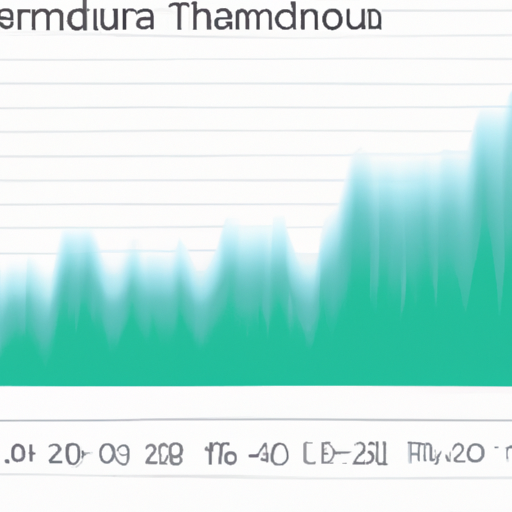
Integrating smart devices into a minimalistic smart home setup requires a careful balance of functionality and simplicity. In my experience with the Inkbird IBS-TH1, its software integration strikes that balance fairly well. Here’s a quick rundown of my impressions:
Engbird App: The Engbird app’s user-friendly interface makes it easy to link the device and begin monitoring right away.
Support for Multiple Languages: An app that provides languages other than one caters to a larger audience.
I appreciate the convenience of utilizing the Data Export Function to save data in CSV format for extensive analysis. By doing so, I can effectively identify trends over time and gain valuable insights into my data.
Real-time Monitoring: Inspecting temperature and humidity levels in real time provides important information for maintaining delicate environments.
On the other hand, there are some aspects where the device needs enhancement:
Bluetooth-only Setup: This setup limits your ability to access data as you need to be within range, decreasing convenience.
No Remote Access: In a true smart home environment, being able to monitor conditions while away would be a substantial upgrade.
That said, the device reliably controls temperature-sensitive areas. As a minimalist, I prefer gadgets that blend into my lifestyle without causing clutter or complexity. The sleek design and efficient battery usage of the IBS-TH1 appeal to me – it gets the job done without being intrusive.
While there is no escaping the limitations of Bluetooth connectivity, particularly its range, the trade-off is a lower power consumption compared to Wi-Fi-enabled devices—a critical consideration for any minimalist trying to reduce energy consumption and maintain a sleek home setup.
For those who use smart technology to monitor critical temperatures, such as ensuring a pet’s safety or protecting musical instruments, the Inkbird IBS-TH1 is an excellent option. This device raises the standard for interacting with our home environment by enabling us to safeguard our possessions without disrupting our daily lives.
Overall, despite some connectivity issues, the IBS-TH1 integrates well into a minimalist’s smart home. It offers necessary monitoring without requiring continuous input. The device’s unobtrusive design and effective app add to a favorable user experience. Although improvements are still possible, it represents the merging of functionality and contemporary lifestyle that both minimalists and tech lovers can value.
